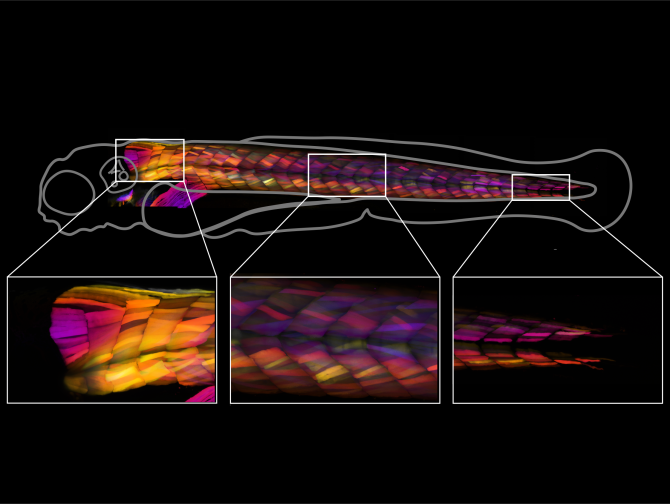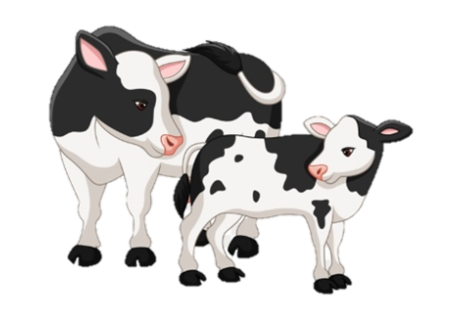
Just keep swimming; how do baby fish develop their muscles to do this while growing?
WIAS Magazine - Winter edition 2022
Research Light
How do baby fish swim? We aim to answer this question at the Experimental Zoology Group of Wageningen University, using fluorescence imaging techniques in larval zebrafish. In one research line, we measure muscle activation patterns in fish muscles labelled with voltage sensitive fluorescent proteins. In a second research line, on which we focus here, we study the 3D architecture of axial muscle fibres labelled with Green Fluorescent Protein. Measurements at different developmental stages will show us how the fish restructure their swimming muscles while growing.
After hatching, a larval fish grows rapidly from a size smaller than a comma, to a juvenile more similar in both shape and size to an adult fish. Throughout this period the larvae need to just keep swimming, in order to eat and to avoid being eaten. The fast changes in body shape and size require a continuous adaptation of muscle fibre arrangements.
Fish swim by alternately activating their right and left axial muscles, thereby bending their body to push against the water. The axial muscle fibres of adult fish are oriented in a complex helical pattern. For the bulk of the swimming muscles, located in the middle and anterior part of the body, the fibres make relatively large angles to the medial and horizontal planes. This enables approximately equal length changes while bending the body, at different distances from the spine. In this way, all fibres can contribute equally to generating mechanical power. Closer to the tailfin, all fibres run more or less parallel to the fish’ axis. These fibres add little to the generation of swimming power, but primarily stiffen the tail to effectively transmit the power generated anteriorly towards the tail fin. For larval fish, the helical pattern was shown to be relatively weak in the anal region, but it is unknown how fibre orientations change along the length of the body and how they adapt these orientations during development.
We made high-resolution 3D scans of 2–12 days post fertilisation (dpf) zebrafish larvae with fluorescent muscles. In these scans, we segmented individual muscle fibres, for which we quantified size, orientation, and curvature. Figure 1 shows the result of one of these scans, for a fish of 4 days post fertilisation. By comparing muscle fibre sizes, shapes and orientations across different ages, we aim to unravel how the muscles develop locally, and where and when muscle fibres reorient during the first ten days after hatching.
Some initial findings in larvae of 4 dpf show that muscle fibre size is similar, but that fibre orientation and curvature vary, both along the length of the fish and within a transversal cross section. This pattern in a 4 dpf fish, therefore, already resembles the pattern seen in adult fish. Once we have quantified the 3D fibre arrangements, we can also predict to what extent fibres along the length of the fish will shorten during different larval swimming styles. This, in turn, will allow us to identify which fibres in larval fish contribute to power generation, and how this differs from the situation as described above for adult fish. This study therefore lays the groundwork for understanding how larval fish, during their rapid growth, rearrange their musculature to optimize swimming performance.

Figure 1. A 4 days post fertilisation zebrafish (Danio rerio) larva. Outline in grey, the depth coded 3D scan in colour. Every slice of the image has a slightly different colour, so a different colour means a different depth within the scan (see legend). Every coloured line is a single muscle fibre. Below, three enlarged sections from (left to right): anterior, middle, and posterior locations.







